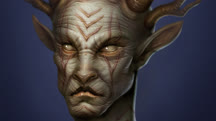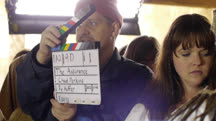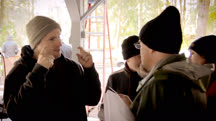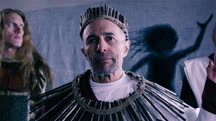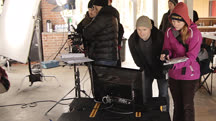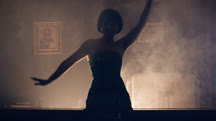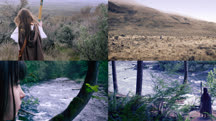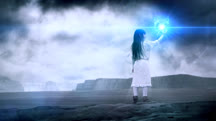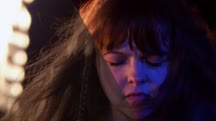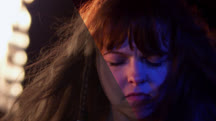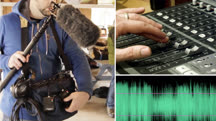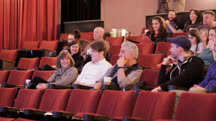Course catalog
Categories
Showing 2,101-2,120 of 8,871 items.
Creating a Responsive Web Design: Advanced Techniques
Learn how to create collapsible menus and add scalable vector graphics (SVGs) to your responsive web design layouts.
Creating a Responsive Web Experience
Learn how to add JavaScript to your HTML and CSS to make your webpages more responsive to different screen sizes. Dynamically load content, add animation, and collapse navigation.
Creating a Satyr Using Layer Styles in Photoshop
Learn how to use Photoshop's digital painting toolset and layer styles to create fine art and concept drawings of fantasy creatures.
Creating a Security Awareness Program
Learn how to develop and implement a successful, ongoing security awareness program that's so much more than just one phishing simulation or an annual required training.
Creating a Serverless Application Using React in AWS (229463)
React is one of the key technologies that the new and modern web is being built upon. In this course, instructor Brett McLaughlin shows you how React and a complete web development ecosystem work together in building applications. Brett goes through all the steps in getting your React app set up, deployed, connected, and supported. Next, he steps you through creating React components to organize and display your content. Brett teaches you how to add cloud services like a database using JSON data and encourages you to ensure your code works on the cloud platform you're targeting. He covers how to interact with AWS and DynamoDB through the command line, then how to create and use a DynamoDB table. Next, Brett goes into how to create, load, and test a new role that can execute Lambda functions and interact with DynamoDB. He walks you through creating and deploying an API gateway. Brett concludes by showing you how to connect your React code to an API Gateway endpoint.
Creating a Short Film: 01 Producing
In this installment of the Creating a Short Film series, learn about the role of the producer: getting financing, dealing with legal issues, and increasing production value.
Creating a Short Film: 02 Writing
Learn about writing a great script including storytelling, working with screenwriting software, and revising scripts. Discover filmmaking tips for anyone who wants to make a short.
Creating a Short Film: 03 Pre-Production
Learn about pre-production. Find out how to prep your shot list, create a shooting schedule and budget, scout locations, and get props and costumes ready for action.
Creating a Short Film: 04 Working with Actors
Learn how to direct actors and get the best performances for your short film.
Creating a Short Film: 05 Directing
Learn about being a great film director, from directing actors and crew to planning and capturing great shots. Get tips to become a better director, storyteller, and communicator.
Creating a Short Film: 06 Working on Set
Get an insider's perspective on the movie-making process. Learn about the roles different crew members play on set, and how to deal with delays, continuity issues, props, and more.
Creating a Short Film: 07 Cinematography
Learn how to use lights and your camera to enhance a story. Explore the fundamentals of cinematography, including how to adjust exposure, frame a shot, and light your actors.
Creating a Short Film: 08 Editing
In this installment of the Creating a Short Film series, learn how to enhance and punch up your story using key editing techniques.
Creating a Short Film: 09 VFX Environments
Learn how to create compelling visual effects for your short film. Get insider tips on how to make CG scenery, add or remove objects from shots, and more.
Creating a Short Film: 10 VFX Effects
Get real-world insights into creating visual effects for short films. Learn how to use common VFX tools to create cool, otherworldly effects like magic particles and explosions.
Creating a Short Film: 11 Color Grading (224839)
Explore the art and science of color grading, an often underused aspect of filmmaking. Learn about why color is important in the filmmaking post-production process, how to adjust the grade to accurately reproduce the colors that were shot, and how correcting color can completely transform bland or poorly shot footage. See how the process of color grading can correct common issues, create a more believable composite in visual effects, and establish or alter the artistic intent and mood of a scene. Plus, find out how to solve real-world workflow issues when exporting nonlinear editor (NLE) timelines for the color grade. Along the way, instructor Chad Perkins explores some of the most popular color correction tools, including DaVinci Resolve, Adobe Premiere Pro, Adobe After Effects, and Redcine-X.
Note: This course is one of a 13-part series, showing the actual techniques filmmakers use to create cinema-quality films. Explore more of the series here.
This course was created by Chad Perkins. We are pleased to host this training in our library.
Note: This course is one of a 13-part series, showing the actual techniques filmmakers use to create cinema-quality films. Explore more of the series here.
This course was created by Chad Perkins. We are pleased to host this training in our library.
Creating a Short Film: 11 Color Grading
Learn about the art of color grading and correction, a critical step in the process of making a short film.
Creating a Short Film: 12 Audio
This course is part 12 of the 13-part Creating a Short Film series, and focuses on all aspects of creating the audio for the film.
Creating a Short Film: 13 Marketing Your Film
Learn how to market a short film, from creating a logo to submitting your short film to film festivals. Discover how to find a niche fanbase.
Creating a TV Stinger
Discover how to create a TV stinger from start to finish. Create this common asset—and capture audience attention—using simple and effective motion graphics tools in After Effects.


